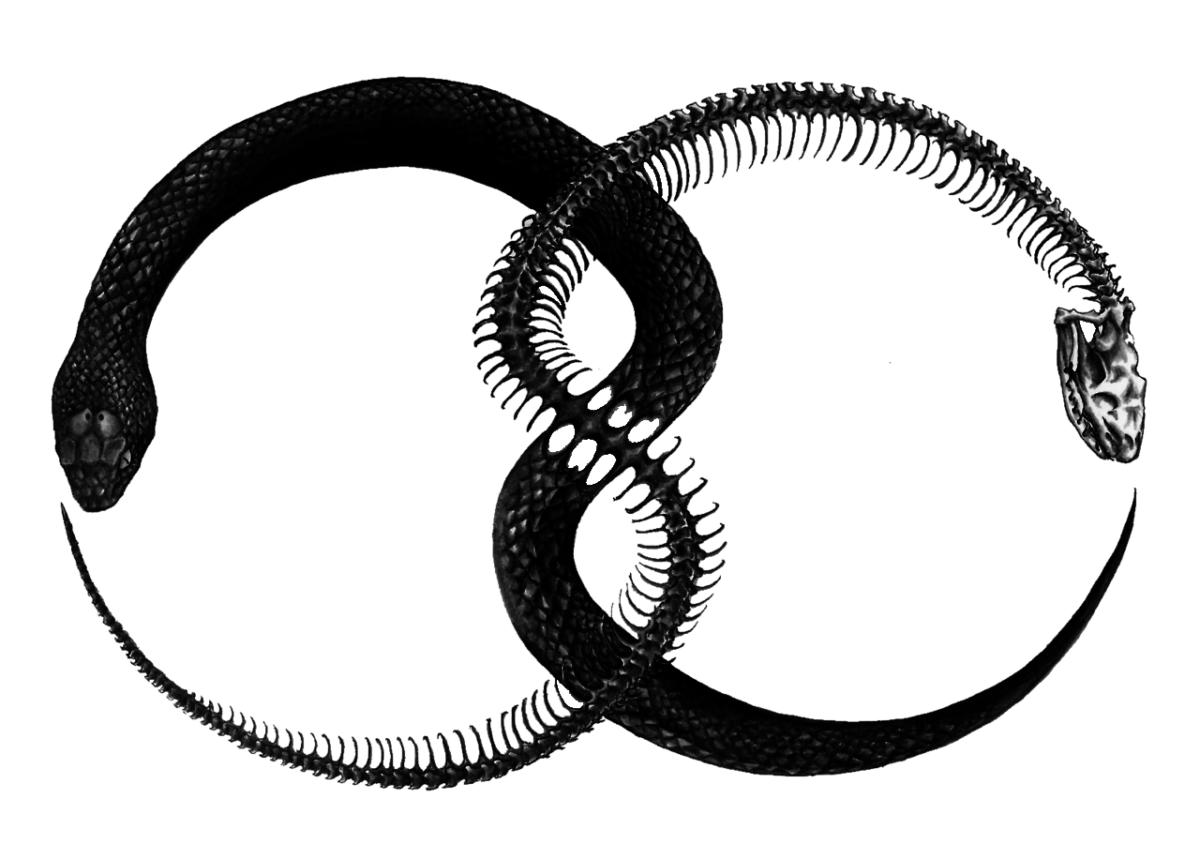In many ways tech has already been mythologized. We throw phrases around like Tech Giants without realizing we are referring to a rich history of mythology of Titanic proportions.
The tech community already has all the elements in place to write its own mythology, replete with gods, muses, angels, heroes, magical talismans, and most importantly, ethics.
Without learning from the morals of myth, tech companies will find themselves going the route of Altavista at best, and Skynet at worst. But even when a tech company fails, its founders can still use mythology to acquire wisdom about life, death, and reincarnation.
The tech community has all the “archtechtypes” to write its own great mythology, and that mythology has something valuable to teach us all, even if its hubris leads us all to the brink of singularity.
Read More: The Übermensch in the Cuckoo’s Nest: Malware in AI-human Hybrids
Let us run through five essential motifs and archetypes of mythology, and let’s discover how these all apply to every aspect of technological advancement as we know it today.
Afterwards, we can use these archetypes to write a whole new chapter in the mythology of tech.
1) Entrepreneurs

Apollo, Mnemosyne, and the Nine Muses by Anton Raphael Mengs
Every technological advancement begins with a dreamer. Today’s dreamers are the entrepreneurs. They must undergo a journey of transformation, after which, they will never be the same.
For the most part, entrepreneurs are often the eccentrics, forging new paths towards providing a better service to society, or, in the case of a tragedy, entrepreneurs can bring about the ruin of everyone around them with their insatiable ambitions that throw morality to the wind.
For the entrepreneurs, inspiration may derive from the little voices in their heads, from their parents, their teachers, their heroes, or other muses.
The entrepreneur may be a god like Apollo in his own right — one that creates and inspires — one who calls forth to action what has been conspired in moments of deep meditation and contemplation, or one conceived in a brilliant, flashing moment of realization.
The dreamer; however, will need help in realizing that vision.
2) Developers and Designers

Lord Krishna opens his mouth and the entire universe is brought forth.
But the entrepreneur, in relation to mythology, cannot do everything on his or her own. They need the wizards and magicians of the tech world to make everything happen.
These wizards are today’s developers and graphic designers. They are the ones who actually conjur the magic.
Developers, like an ancient priesthood, have their own language and code that most of us will never understand. A developer’s code is like a magical spell through which the impossible can be made manifest.
Read More: New evidence for Holographic Universe backs up ancient esoteric teachings
Like many ancient creation stories, “In the beginning was the word.” Once the first word was spoken, it was a moment of self-realization that sprang forth into being all that there is.
The developers of today carry on that tradition with every line of code they write. Every tab, space, and backslash is a hearkening back to the beginning of creation.
There is a fetching myth about former US President Eisenhower and the first computers discussed in The Power of Myth by Joseph Campbell and Bill Moyers.
Eisenhower went into a room full of computer and he asked these machines, “Is there a god?” And they all start up, and the lights flash, and the wheels turn, and after a while a voice says, “Now there is.”
Additionally, graphic designers are the artists and poets that breathe visual life into the creation. They represent aesthetic beauty, and in many cases draw upon nature as references when designing their art.
So, what type of magic are these modern-day wizards and magicians creating in the world of tech?
3) The Product

Pandora with her magic box “gifted” by Hera, wife of Zeus
Technology is a way of doing something better. It helps ease the burden of mankind, just as the gods created mankind to help ease the burden of labor in the mystical garden.
In mythology, the hero is often accompanied by a magic talisman that aids him in his quest of self-discovery. These magic talismans can be a cloak of invisibility like in Harry Potter, or they can be like magic seeing stone the Palantir from The Lord of the Rings.
In the tech world, these magic talismans are the products that go to market. They are objects that provide a service to mankind like an iPhone or a magic ring.
Alternatively, these magical objects can also lead to ruin like Snow White’s poisoned apple or a potential AI superintelligence that wipes us all out.
Read More: Microsoft’s Acquisition of AI Startup Maluuba is like Hera’s Gift to Pandora
Once the dreamers conceive of creation, they call upon their magicians to summon forth the magic.
Next, they will want to shout from a mountain as heralds to world about the glory of their creations.
In the world of mythology, this is where the angels and shamans come in to play.
4) PR, Journalism, and Storytelling

Archangel Gabriel appears before the Virgin Mary in The Annunciation by Suzanne de Court
“Angels” is another word we throw around without grasping its entire significance. To many, angels are winged creatures with halos.
In the tech community angels are investors, but what the word “angel” literally means is “emissary” or “messenger.”
In mythology the angels are the messengers. They communicate directly with the source to deliver its message to the world.
Storytellers, journalists, and PR specialists are the tech world’s answer to the ancient archetype of angels. Their job is to receive messages from other realms and interpret these messages in a way that humanity will understand, just as shamans have done for thousands of years.
A shaman goes into a cave and has a mystical experience. He then interprets and relays his vision to the community. A journalist goes into the field to collect information. He then relays his version of the truth to the community.
The angels of today, in the most literal sense of the word, are the emissaries. They are the ones who interpret the dreamers – the entrepreneurs.
5) Life, Death, Resurrection, and Transformation

The Egyptian Weighing of the Heart. If the heart was heavier than a feather, the spirit would not advance to the next life.
The common themes of life, death, and resurrection in mythology mimic exactly what happens in the business world of tech.
There will always be failure in life, but what one chooses to do with failure defines the entrepreneur’s legacy.
Many religions are born from myths about the cycles of the stars and planets. The story of Jesus, Horus, or Mithra is the same as the sun as it goes through its symbolic death in the Winter and rebirth in the Spring.
With each rebirth or reincarnation, the sun or god is transformed into something new. It pivots.
Read More: AI and Spirituality: Toward the recreation of the mythical, soulless Golem
In the mythology of tech, we have platforms like Netscape and Internet Explorer. At one time they were the biggest rivals in their space, but after going through battle and the cycles of time, Netscape was bought by AOL (another former Titan of Tech) and its spirit now survives in the form of Mozilla Firefox.
Likewise, Internet Explorer lived its life, died, and was resurrected as Edge.
I could go on and on about the mythological cycle of life, death, and resurrection in the tech world, but let us now continue on with a deeper understanding of how mythology relates to tech.
The Function of Mythology in Tech

The Ouroboros – the continuous cycle of life, death, and rebirth
The purpose of mythology, according to the greatest mythologist of the 20th Century, Joseph Campbell, is to serve four functions.
1) The mystical function — realizing what a wonder the universe is, and what a wonder you are, and experiencing awe before this mystery.
This is the big bang moment of realization that tech entrepreneurs have when their dreams take form.
2) A cosmological dimension — the dimension with which science is concerned – showing you what shape the universe is, but showing it in such a way that the mystery again comes through.
In the mythology of tech, this is about how the entrepreneur’s vision can be physically realized and expressed in the greater context of a particular industry, market, or society.
3) The sociological function – supporting and validating a certain social order. It is the sociological function of myth that has taken over in our world.
This has to do with creating a technology that not only benefits society, but fits within its system of values.
4) The pedagogical function – how to live a human lifetime under any circumstances.
This is where tech companies can get into trouble. If the product or service is ego or money-driven and throws ethics out the door, it will eventually crumble.
Why Tech Needs Mythology

The Creation of Man inspired by the Mayan Popol Vuh by Diego Rivera (1931)
The tech world needs its own mythology, now more than ever, lest its corporations become the monsters, demons, and fallen angels of the past — forever in pursuit of material gains that leave society soulless and the future bleak.
If the tech community does not follow the morals of mythology, it is doomed to die, or do even worse for humanity. If an amoral tech company were likened to parts on a wheel, it would be the rim. It would ride high one day, but eventually is brought to the bottom.
Tech companies and entrepreneurs alike need to be the hub or cog of the wheel. That way they are always in the middle; always centered and ready to adapt to whatever bumps that lie ahead.
Since the tech world has all the above elements of mythology in place, the only thing left is to adhere to its ethics. Mythology teaches us in so many ways how to live a virtuous life, and it provides valuable lessons in humility for those who don’t.
Read More: The Story Of Artificial Intelligence As Told By The Ancient Mayan Popol Vuh
The threats of technology come in many forms. Today, we have cameras that can spy on almost any part of the world, government hacking programs that raise serious privacy concerns, software that can launch missiles at the press of a button, and the as-of-yet unknown threat of Artificial Intelligence if it ever reaches a singularity and sees humans as a threat to survival.
In the centuries to come, will Steve Jobs be remembered as a Buddha? Will Bill Gates be memorialized as a Centaur or Janus for his dual life of software and vaccines? Will Mark Cuban be likened to the great Mayan warriors who literally gave their lives to the ball game?
We are at a crossroad with our technology, and that crossroad is where the hero of the mythological journey must make a decision — continue to go down the same path where others have trodden to ruin, or blaze a new trail out of the darkness of the wood and into the illumination of light.
That hero is you and me. The power is within us all. We are the dreamers and the weavers of magic. We are the heralds of the world. We all undergo the journey, and we must transform ourselves through the magic of myth while bringing morality back into the world through whichever path we take in life.












